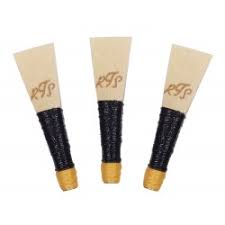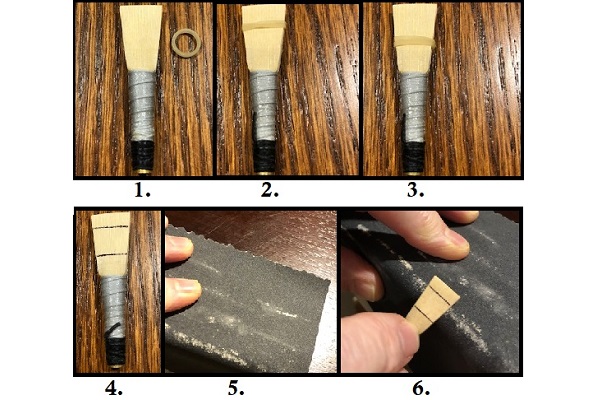Hi Gerry,
Reeds arrived today.
Thank you very much for your excellent service and price.
Have a great night.
Bob

Shepherd Standard Pipe Chanter Reed (IN STOCK) (This is a molded design)
Quantity in Basket:
NonePrice:
$17.00Shipping Weight:
0.02 poundsThe is the original Shepherd Standard Pipe Chanter Reed -
The Shepherd chanter reed was the catalyst that created RT Shepherd and Sons (Scotland) Ltd and today it remains the cornerstone of our business and the reed choice of champions.
Our superior production methods and strict quality control at each stage of manufacture (10 stages in total) ensure that the length of the Shepherd reed remains constant in relation to its other variables. The end result - a unique reed produced and finished by a combination of dedicated craftsmen and advanced machinery techniques and providing greater efficiency, easy adjustment for weaker blowers and easy adjustment to raise pitch.
This consistency makes it easier to manipulate the reed for the required strength and still maintained its desired consistency of pitch and vibrancy
The characteristic of the pipe reed as well as being dependant on the rigidity of the cane being used also depends on the control of the following ratios in the construction and design
Length / Curvature
Thickness / Length
Staple production consistency
All Shepherd reeds and instruments are designed to deliver a pitch combination of around 480 (Using a Bagpipe Tuner) and around 454 (Using a Korg Tuner). Enviromental conditions can have an effect on your desired pitch.
Selecting a Pipe Chanter
Reed
 You never see a professional player struggling to play the bagpipe; they always
seem relaxed and comfortable. The pipe bag is the correct size, is 100%
airtight, stocks are tied in correctly and have no cracks, the blowpipe
is the correct fit, the valve is functioning properly and all the joints
are hemped correctly (see the past 3 articles). If you have corrected
these problems and the pipe is still difficult to play the next thing to address
is the pipe chanter reed . Many pipers get into the bad habit of trying
to blow reeds that are much too strong for them. Nothing can hamper your
technique and expression more than trying to play a bagpipe reed that is too
hard for you. Pipe bands are one of the biggest contributors to this problem by
insisting that reeds must be stiff and difficult to blow in order to contribute
to the sound of the band, don't get suckered into this myth. It is not the goal
of this article to teach pipe chanter reed adjustment, (that will come later)
but rather to help in your selection of a reed that is within your playing
comfort level. The question I am asked the most is "What strength reed should I
play easy, medium, strong or something in between"? The answer is none of the
above, you have to play a reed that is within your own personal comfort level.
What may be a strong reed for one person might be a medium reed for another
person.
You never see a professional player struggling to play the bagpipe; they always
seem relaxed and comfortable. The pipe bag is the correct size, is 100%
airtight, stocks are tied in correctly and have no cracks, the blowpipe
is the correct fit, the valve is functioning properly and all the joints
are hemped correctly (see the past 3 articles). If you have corrected
these problems and the pipe is still difficult to play the next thing to address
is the pipe chanter reed . Many pipers get into the bad habit of trying
to blow reeds that are much too strong for them. Nothing can hamper your
technique and expression more than trying to play a bagpipe reed that is too
hard for you. Pipe bands are one of the biggest contributors to this problem by
insisting that reeds must be stiff and difficult to blow in order to contribute
to the sound of the band, don't get suckered into this myth. It is not the goal
of this article to teach pipe chanter reed adjustment, (that will come later)
but rather to help in your selection of a reed that is within your playing
comfort level. The question I am asked the most is "What strength reed should I
play easy, medium, strong or something in between"? The answer is none of the
above, you have to play a reed that is within your own personal comfort level.
What may be a strong reed for one person might be a medium reed for another
person.
How do I choose a Shepherd R01 pipe chanter
reed
Visual Test:
1. The reed should have a nice
clean look with no splits down the length of the cane and no chipped corners.
2. Both reed blades should be the same thickness and must fit tight together
with no gaps.
3. The blades at the open end should have a nice elliptical
shape.
Airtight Test:
Hold the reed in one hand and place a
finger over the cane tip's end of the reed to seal it and blow through the reed
from the staple end, run a finger of your other hand down both sides of the reed
to ensure that no air is leaking from the blades. If the reed is leaking air
discard it.
Chanter Test:
Now place the reed of your choice
into the reed seat of the pipe chanter and take a deep breath. Form a tight seal
with your lips around the lacquered hemp on the pipe chanter reed (not over the
hemped end of the pipe chanter) and play the scale from Low A to High A and then
back down to Low A. If you can't do this in one breath - the reed is too strong
for you to play comfortably, select another reed. When you find a reed that will
pass this test, that is the correct strength reed for you in your present
playing condition. By following these three steps you should be able to select a
reed that will give you many hours of comfortable playing.
Learn by doing!
Pipe Chanter Reeds.
To change the strength and pitch of a pipe chanter reed, if the reed is only slightly too strong:

1. Pipe chanter reed with reed elastic. Wrap the elastic 2 to 3 times around the reed.
2. The higher the elastic, the easier the reed is to play.
3. The lower the elastic, the stronger the reed is to play.
Once you have the reed at a comfortable strength you may have to raise or lower the reed in the reed seat by adding or subtracting hemp in order to achieve the correct pitch.
To change a much stronger reed:
4. Divide the reed into thirds, the top line approximately 1/8" down from the top of the reed and the bottom line approximately 1/4" up from the hemp binding.
5. Fold a piece of 220 grit sand paper over the corner of a table. You are now going to remove material from the middle third of the reed.
6. Hold the reed so that you are sanding the shoulder of one side of the reed then across the flat surface to the other shoulder, repeat this 4 to 5 times, flip the reed and do the same on the other side, then test the reed, if it is still too strong keep repeating till you achieve the strength you are looking for.